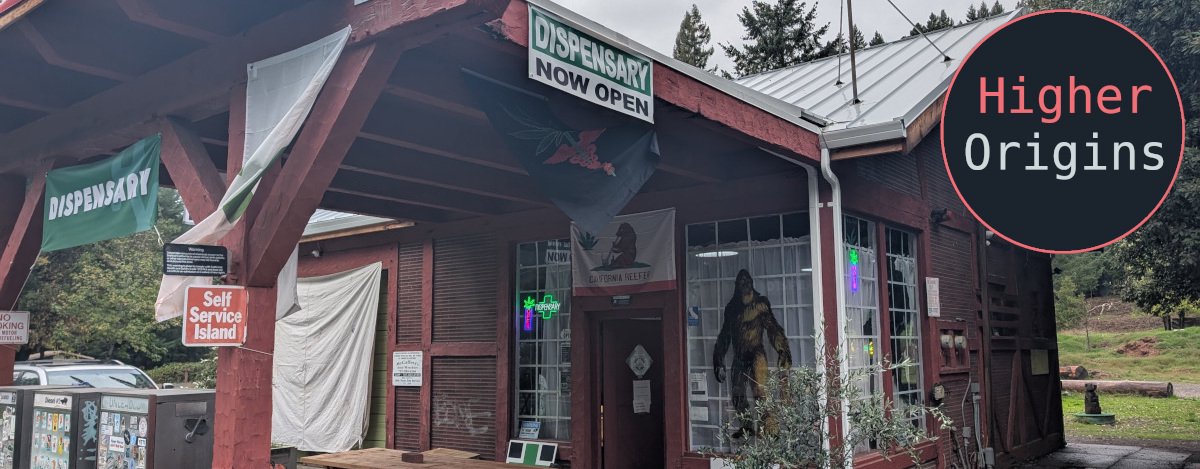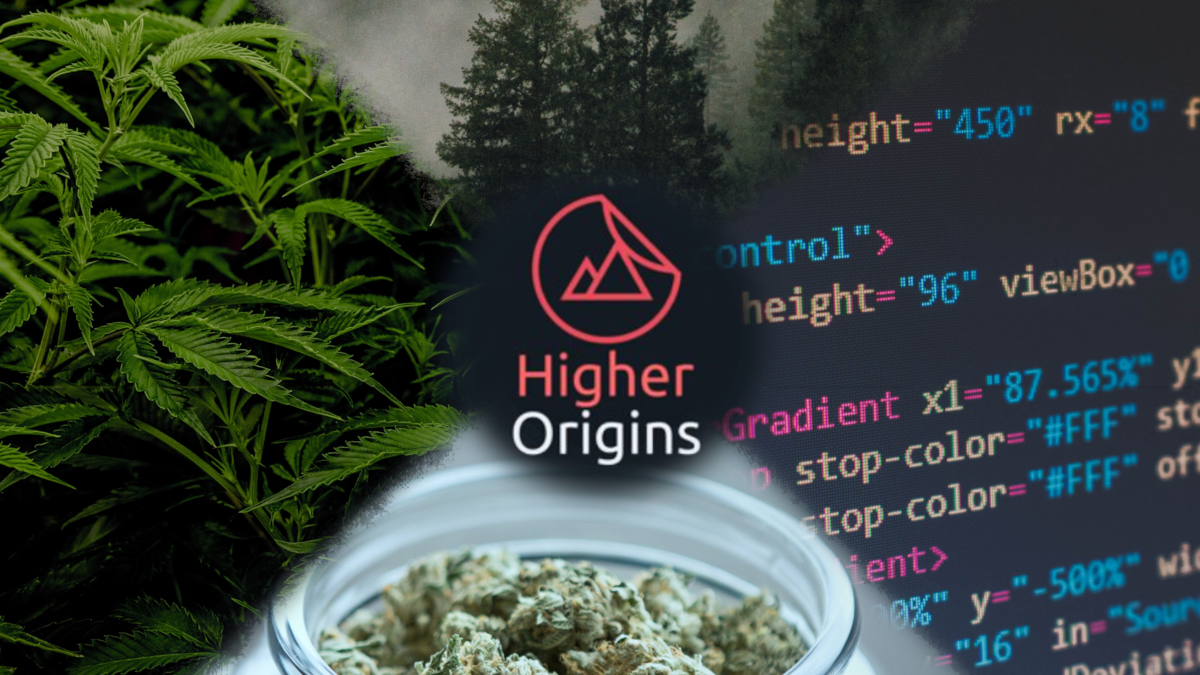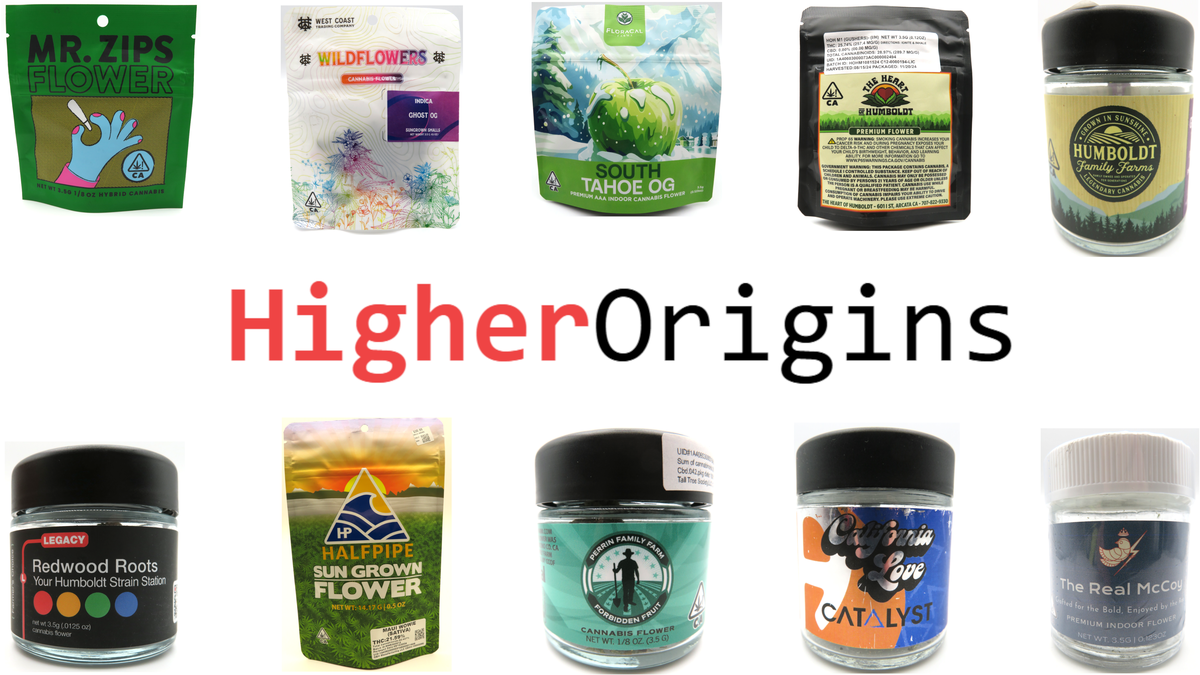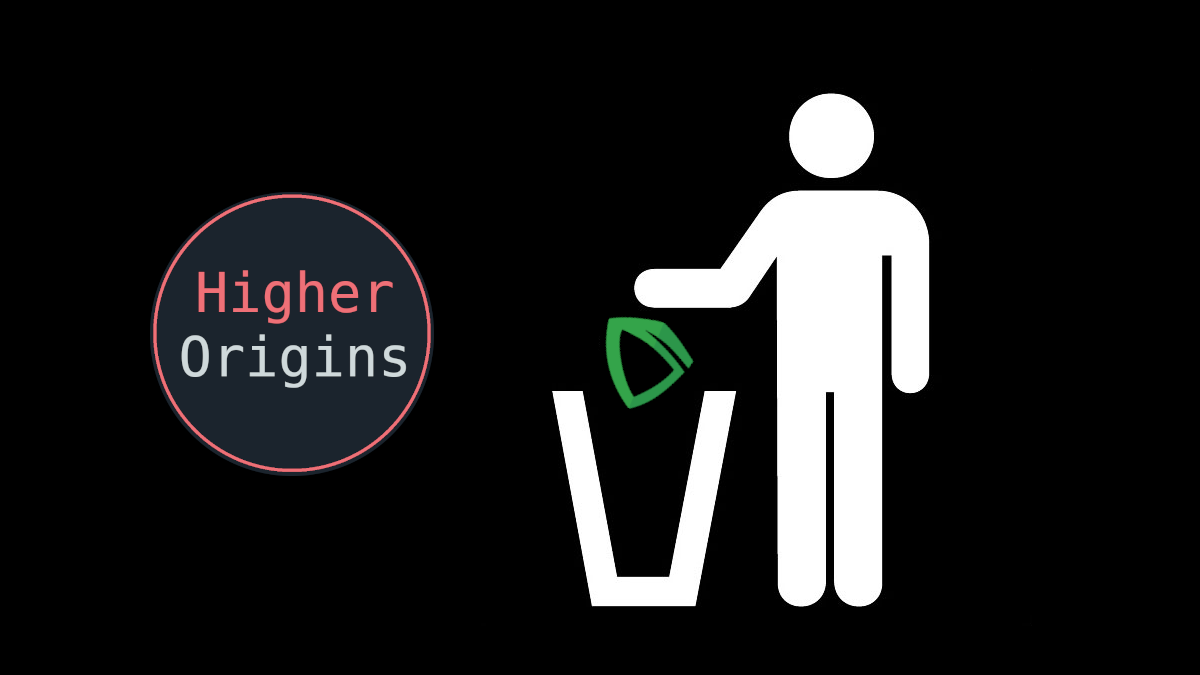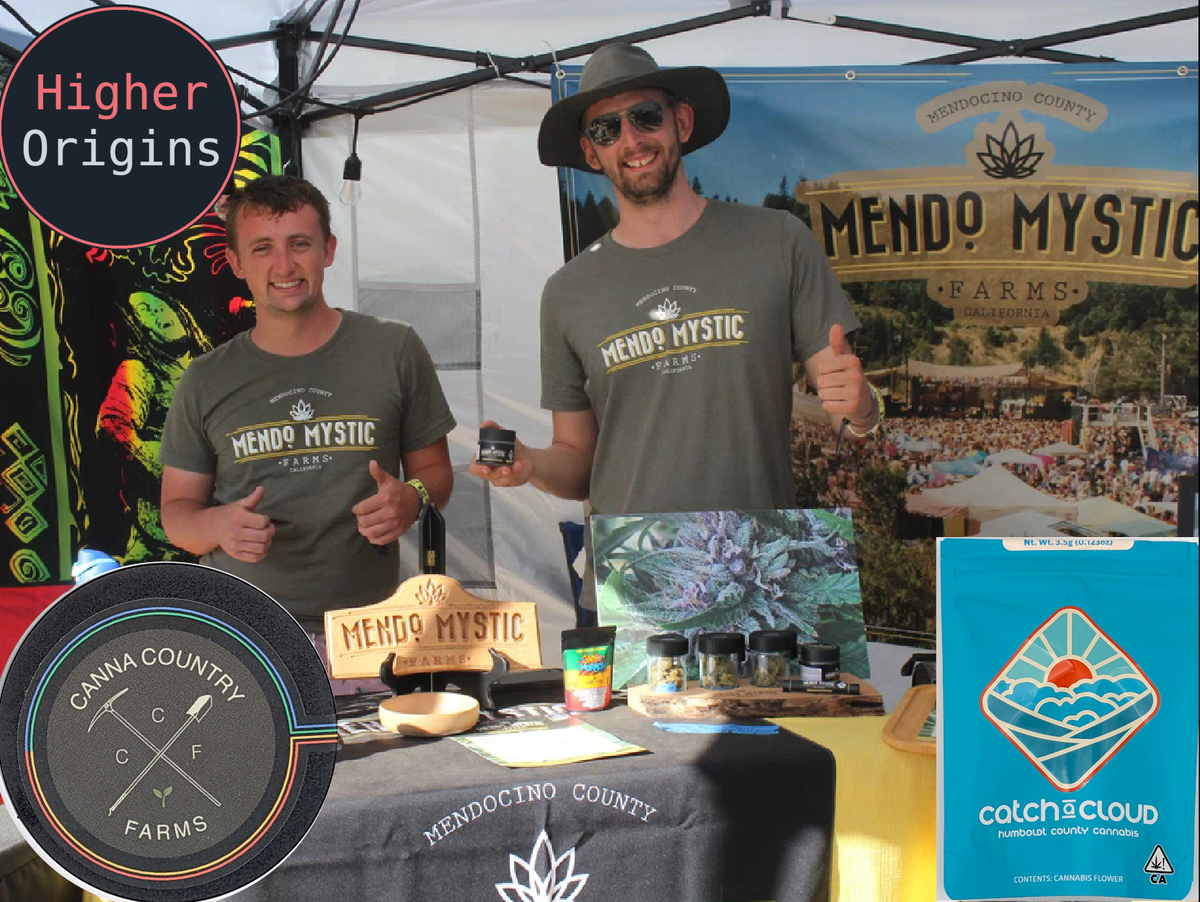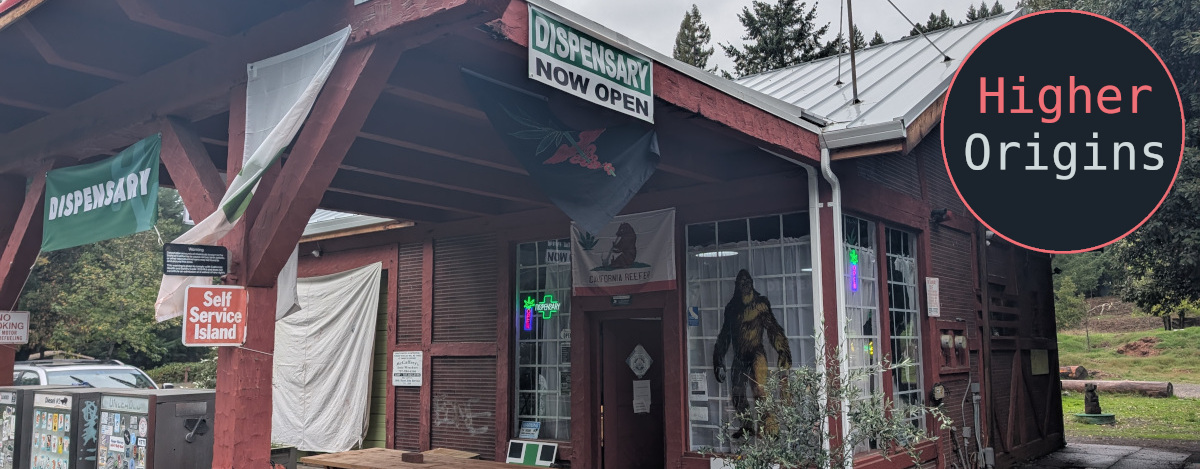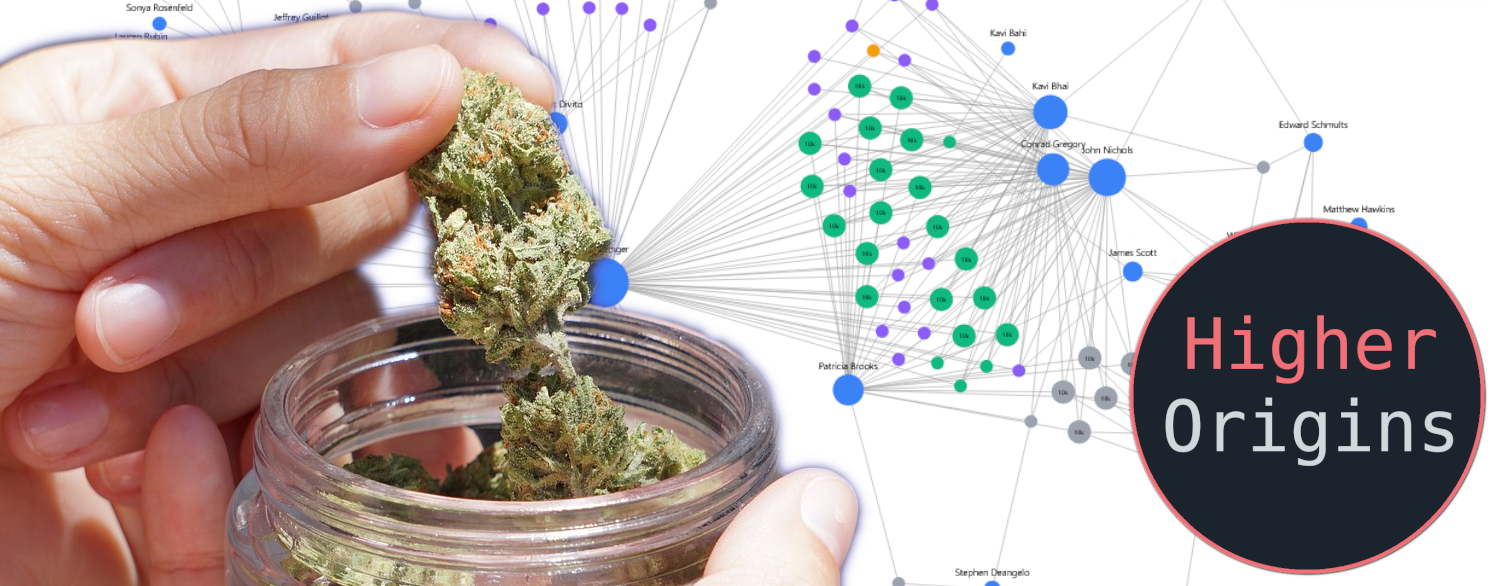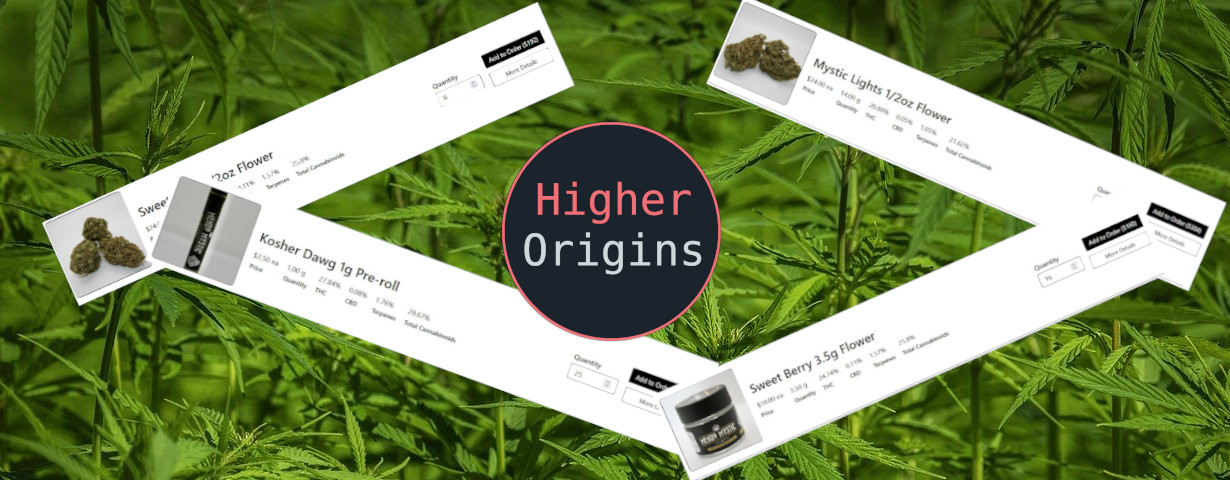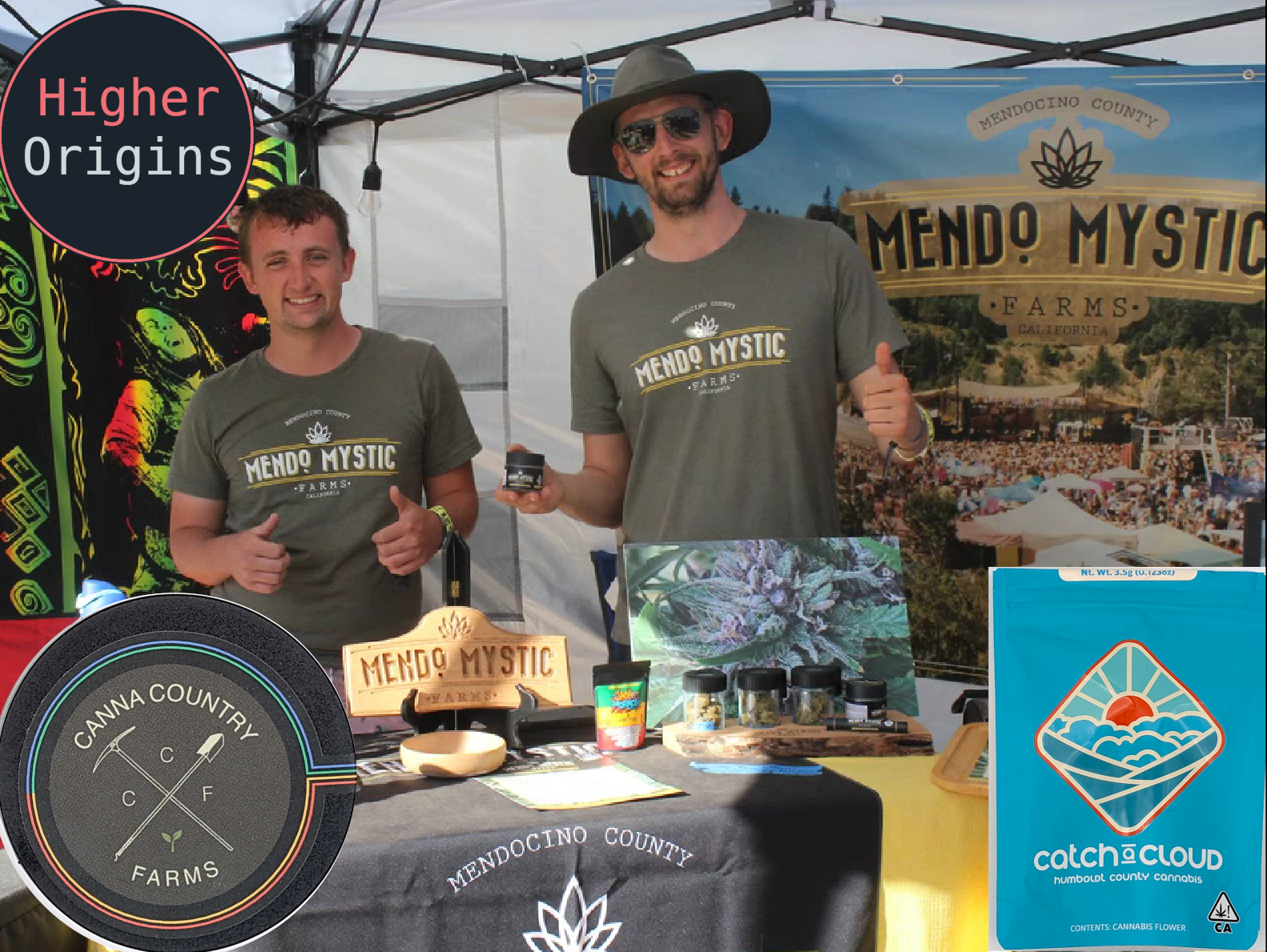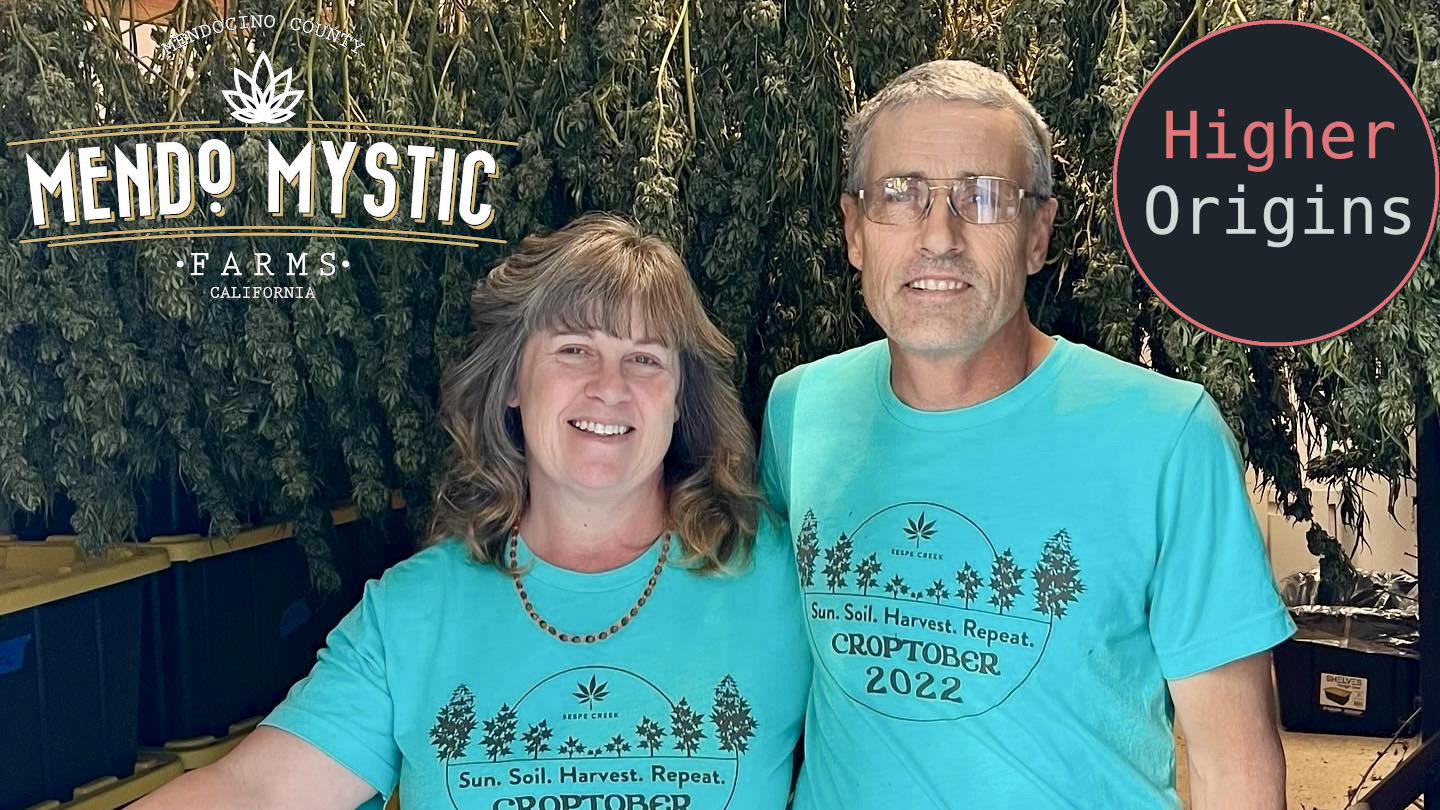For this farm interview, we sat down with Marty Clein of Martyjuana, a small cannabis farm in Mendocino County.
Hi Marty! Thanks for joining us. Let’s start at the beginning: what brought you into this industry, and how long ago was that?
We’re medical refugees from Miami, FL. We’ve been smoking forever. I always had access to it back in Miami, and it had a beneficial calming effect on me. I give it credit as one of my keys to success in sports and scholastics. We decided to come out to California when prop 215, the Compassionate Use Act, got started. We wanted to be safe in legal and cannabis chemical content terms. We knew that in a protected legal industry we could openly see how and where it was grown, so we could be sure that what we were smoking was clean and organic, and likewise be upfront about how we grew to patients as well.
That’s quite the move, but it makes sense to pursue cannabis freedom and safety where it can be found. How was the transition to California?
Our first place in California was in the Sonoma Valley, where we lived for 10 years. We got 215 prescriptions right away and blended into the local scene, where pretty soon everyone knew me as the weed guy. We still renew our medical cards today, we believe strongly in the medical nature of cannabis. To quote Dennis Peron, “All marijuana is medical.”
In Sonoma, we were growing upstairs on a deck above a garage and had a surplus, which we would provide for patients who couldn't cultivate their own for whatever reasons. Back then, the laws in Sonoma County allowed 99 plants per prescription and there was no way we were ever going to overgrow that. We were part of a collective and held many patient prescriptions. Upon moving up to Mendocino County in 2013 we thought we found the perfect homestead, but the new adult use regulations came with too many limitations and ordinances which prevented commercial cultivation on our rural residential parcel. So, we got a farm in Covelo 8 years ago, which is now County permitted and State licensed.

Marty back in the day, in the weeds
How was your journey as a small farm getting into retail? What kind of challenges did you face and what kind of advice would you give related to that?
You’ve gotta be persistent to get into retailers. Back in Miami, after hurricane Andrew in 1992, I became a sales rep in the post-disaster economy. That experience taught me that it's all about persistence- you gotta keep calling and emailing, focusing on building a solid relationship where you visit them, give them gifts, and maintain the connection. If you're not willing to make the calls and constantly be the one reaching out, it's not gonna work.
You have to do it in person too. Even now, it’s hard to get the attention of the buyer at a retailer without meeting them in person. Back during 215 I was doing that long drive down to LA all the time, I was there and back constantly. Those last few hours coming back North at night are dark as hell, and even when I was younger I’d space out when I was driving and not be able to tell if I was in Cotati or Cloverdale! I think that today there's value for a 3rd party distro to provide connection and sales rep services here, since a lot of smaller businesses aren’t equipped to do that, especially long distance like that.
In the years you’ve been growing and providing cannabis in California, what kind of industry changes and obstacles have you seen, especially around legalization?
Now that it’s legal, it's harder to provide to patients. It feels like we’re deeper into prohibition since prop 64 passed than we were previously. We now lack and lose retail value since we’re alienated from our patients and consumers and can’t send hugs and stickers to people- those connections are key to this business and we’re being denied them. My consumers should be able to pay based on my production costs, not what the middlemen negotiate the price down to for their own margins. During prop 215, it was easy to sell at break even prices, or operate on donations based on our needs and what our patients could afford.
Price is important, because in some cases I’m having to sell jars for as low as $8, while $12-$14 for an eighth is closer to around what I need to establish a solid wholesale profit model. I’d rather sell directly without wholesale at $25-35 and recover the retail value. That’s why I participate in farmers markets, which aren’t a perfect solution as even there it’s not truly direct sales, since we still need a retailer on site to manage the transactions to stay compliant under the regulations. But I can get better margins there.
I’d be happy to pay 15% to a distributor if they could make it economically feasible and purely fulfill that service. But my experience has been that often they’re using their position to squeeze everyone instead. I’ve been on the hunt for a truly equitable distro for 6 or 7 years and there've been little to no good opportunities. Luckily, we got the fee waivers for equity farms from the state, so that’s helping a little. I feel like I'd be comfortable if I could sell directly to consumers because that allows me to maintain that valuable connection.

Marty, peace, and a classic Mendocino Country tree
We agree with you on the problems with wholesale, direct to consumer or direct to retail is a vastly better system for small farmers. Despite those challenges, how is your farm doing?
I only grew 130 lbs last year, which is only about 25% capacity for the space I have. I’ve had to be careful and control my supply intelligently so I don't overproduce and can stay profitable. I'm looking to scale 20-30% this year though. We recently renewed our permits and license so we’re not going anywhere. Currently we’re managing better than we used to, and we’re starting to notice a greater appreciation in the market for craft cannabis so pricing is coming up a bit.
Looking forward, we want to see our farm still growing cannabis in 100 years. We would like to see our land put in trust to continue the production and be protected. Hawaii is doing something like that with their historical coffee plantations, where they are being preserved for that purpose only and people can apply to operate them as stewards. CDFW and Sun and Earth Certified have been helping support us with grant opportunities that we can use to improve our farm for the long term, so that might provide a path towards some kind of preservation.
We’ve heard that you’ve been involved with some musicians like the Grateful Dead and Michael Franti. Can you tell us more about that?
It’s all been through our eBay store- Conscious Consignment. Our little corner of Shakedown Street on the web. There’s always stuff out there that people want sold but aren’t able to do it themselves profitably, especially when a band has a bunch of leftover tour merch, or an artist has stacks of old handbills and posters. We’ve been able to fill the niche for something we’re passionate about and keep in touch with like minded folks worldwide through our version of upcycling music memorabilia. And we have all kinds of other collectibles on there as well, including a category of cannabis brand swag. The eBay business is all about helping people make money, and recognizing those opportunities and working on building connections to earn that business. Being diversified in this current economic climate has been good for us,
We loved the music of Michael Franti & Spearhead so we hit him up on Myspace, and offered to sell his last year's tour merch, like we have done for many of the artists, insiders, family and friends of the Grateful Dead and other bands. There was a contest once where they asked fans to write a song, so we submitted one, a parody “Peace (in the world)” to the tune of the “Grease (is the word)”. We didn't win but from submitting that song we built that relationship & from there Franti gave us 100 boxes of stuff that we’ve been selling for years now- I think there‘s still some on our website. We’ve sold all kinds of his merchandise over the years: tapes, t-shirts, and his Stay Human yoga brand including gear from clothing to mats. It’s been a great time, we went to Power to the Peaceful festival, Yoga Journal, and GreenFest and managed all his merch sales there as well. We’ve also worked with the String Cheese Incident, Railroad Earth, multiple festival promoters, jamband street teams and marketing departments, folks who worked for Grateful Dead Productions, as well as artists and collectors looking to buy and sell.

Marty repping the Growers Handbook
You mentioned you were involved in wine in Sonoma, do you think wine and cannabis can learn from each other?
Connoisseurs understand quality in all categories no matter what, if it's tomatoes or seafood or wine or cannabis. One of our mentors, Phil Coturri, is one of the leading organic and biodynamic viticulturists in Sonoma and Napa Counties. He was interviewed for an article in the New York Times in 2017.
Phil Coturri’s main points from this article:
Phil sees cannabis and wine as complements rather than competitors.
Just as connoisseurs look at wine, we should look at cannabis.
Good cannabis, like good wine, has a sense of place and can articulate its terroir to the smoker, making appellation protections vital to the cannabis industry.
There is a divergence between high end outdoor cannabis and commodity indoor “Walmart weed” and the industry will stratify itself based on that difference.
If California had followed Phil’s advice we’d have avoided many of the problems we have now. He’s still around, he just turned 70, we can still ask him about anything from terroir to marketing! It’s the luxuries of life that make you feel good, and any good wine tasting room can tell you that. We weren't originally wine people back in Florida, but when we moved to Sonoma and lived among the vines we found we wanted to understand. We immersed ourselves in wine culture and learned that it revolved around celebrating the seasons, organics, biodynamics, appellations, nuances of aroma, flavor, food pairings, etc. I recognized a lot of the same thought processes that I had already learned in cannabis.
If we want people to think of wine and cannabis in the same terms, it requires more accessible education on terpenes and terroir. It’s about how the environment influences the final product. Ultimately you need a way for the customer to understand how the cannabis or the wine is telling them about where it came from and how it was grown. We’ve seen this educational impact even at the small scale- plenty of people have come to visit from the city, and they have a different perspective after drinking wine in a vineyard, smoking a joint on a cannabis farm, or eating a strawberry or tomato out of our garden. That’s why we believe farm tours and cannabis events that give people the opportunity to genuinely experience that environment, will make people value small farms more. In wine country there is a certain rustic chic that we would love to see someday emulated by cannabis. We went to this place in Napa with a gondola that takes you over the vineyard and it's a whole experience- like adult Disneyland!
That’s a good point about education! What do you think about programs like Oaksterdam University or Ganjier?
The overall gist of programs like Ganjier and Oaksterdam are good, especially if someone comes from another industry or is used to a higher level of education, they need a similar option if they get into cannabis. There is even a degree program now at Humboldt State University and we’ve heard of others too. However, we also need “Cannabis 101” classes for travelers, something less intense than a certificate program, but still a specialized seminar. These classes could educate about growing practices or varieties and effects, or offer experiences like infused dinners, ganja yoga, or puff and paint. These would be a great driver for tourism as well.
People call us from all over the country wondering why the cannabis quality in their state or region of California isn't as good as it used to be, and I talk to them about sungrown organic and clean growing practices. Know how it's grown! My wife talks to this young girl sometimes, the daughter of one of her childhood friends. She’s going to college and looking to get into weed as a career, and she got sent out to one of these programs by the company she works for, and it was amazing for her, and now she wants to work for small farms instead of the big ones. Some people spend $1000s to be a Ganjier, others get sent there from MSO’s. We can see benefits to these programs training future leaders.
When selecting your genetics do you have any specific process?
We like to focus on the Indicas. That’s what my wife uses most for her medical conditions. She deals with a lot of nerve pain and she’s found that some sativas can actually accentuate it, while indicas tend to relax the feeling of electricity running through her body. We used to grow specifically for the needs of certain patients, a few plants per patient, and we could get strains that specifically were targeted to what they needed. Now, with the way the regulated market is set up in METRC, California is losing a lot of the unique terp profiles to hybrids.
Recently we’ve been communicating with buyers and dispensary owners to find out what the customers want. We’re lucky to be able to source locally in the Emerald Triangle for commercial clones of the most desired strains, or we attend seed swaps and often trade genetics with other farms in our area. We also believe in continuing to breed our own cultivars, since we know they produce quality herb and thrive on our farm. For example, our Cosmic Tangie which we have in infused pre rolls ready for retail now. And our Supreme Gelato, which we entered in the 2023 California State Fair, just won a gold medal.

Marty and his wife Laura
What are your thoughts on expansion of farms, should there be a legal size limit?
We see the California market in a contraction, possibly, at least until the interstate trade walls come down. We were opposed to expansion in Mendocino due to the way the Board of Supervisors had it planned. We do feel cultivators should be able to scale up to an acre, but we have no plans to grow more than a quarter acre ourselves.
When testing your product, do you test for terpenes as well? Do you think consumers should care?
We’ve always tested our products. We feel that it's important to show the quality of outdoor cannabis. We were one of the early clients at Steep Hill lab when it was the 1st and only testing lab in California. We always wanted paperwork since we used no chemicals, pesticides, etc and wanted to show people proof of that.
And yes, terpenes matter. Especially as the research is catching up, showing that sungrown cannabis has a more pungent profile, and that certain terpenes are better for certain ailments. We still use the terms indica & sativa, but we follow it with the word “dominant”, since nowadays most, if not all, cannabis and hemp strains are hybrids. Those two terms are just the beginning of what a person can know about how something affects them. We miss the days when consumers were allowed to open the jar and smell it. The terps and the olfactory senses go hand in hand- we know what's good for us if it smells good to us.
What do you think is more important- genetics or growing skills?
Both are important but I’d probably lean more towards growing skills. What I always say is that the most important part is the post harvest production process and curing. I could get deep into that topic, I do full hour workshops on it for educational purposes. Know how to preserve your terps.
What's the number one advice you’d give to a struggling farm?
Hang in there and don’t forget to spend time focusing on self-care, your family, and things you love.
What makes the environment of your Covelo farm special?
We’re high in the hills, in a pastoral and pristine environment where the plants thrive. Someone once said that cannabis growing in the mountains of Northern California can't be beat because of the clean air, clean soil, and this farm is a good example of that.

Happy plants at Martyjuana Farms near Covelo, California
What do you want the final patient/consumer of your product to know?
We care. We smoke what we grow. GMO Free, Pesticide Free, Worry Free.
What’s the most ridiculous thing you’ve seen or experienced in your time as a grower?
Speaking from experience: If you get a rash on your skin after working at another farmer's farm, then do NOT wait until it is ALL over your body before you tell someone. Poison Oak is really bad!
What’s a collaboration you’ve had that worked out, and what can other people in the industry learn from that experience?
Dr Robb’s Eagle Brand and Rove Featured Farms have been steady collaborators of ours since the adult use market opened in 2018.
You can also learn more about us in Ed Rosenthal’s newest edition of the definitive guide for cultivators. CANNABIS GROWER’S HANDBOOK, “Planting by the Moon: The Martyjuana™ Garden” in the “Featured Gardens & Growing Styles section section of the book by Ed Rosenthal, Angela Bacca, Dr.Robert Flannery.
Despite all the obstacles to success in this industry, what keeps you moving forward?
Our passion for the plant. The feedback from those who consume it. The ability to farm in a sustainable way that is good for the people, the plants and the planet. It is our medicine.
Thank you so much for talking to us Marty!
-Keep Growing!

